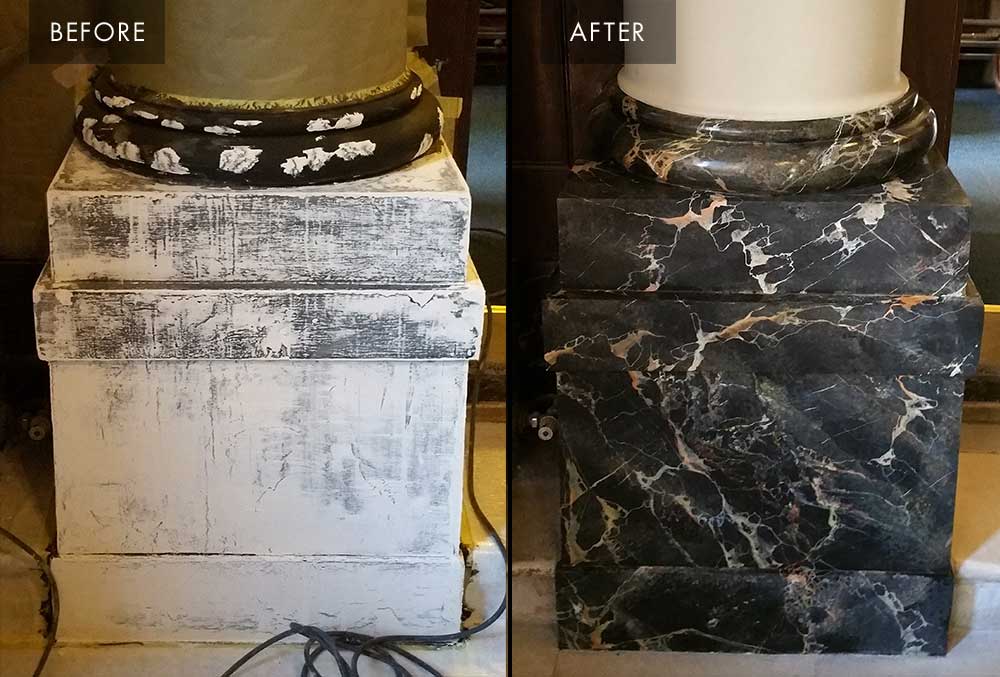Marbling Traditional Techniques

General
Environment.
Cleanliness and unrestricted work area is most important along with a dust free environment.
Surface preparation.
Ensure all loose defective material is removed back to a firm edge. Fill all surface imperfections with a suitable filler/surfacer followed by thoroughly sanding/rubbing down to a smooth sound finish.
One or two coats of an oil based ground coat, colour to suit and when dry lightly abraded with 1000 grade wet or dry to remove any surface nibs, rinsed with clean water and allowed to dry.
Apply selected scumble in accordance with the manufactures recommendations.
Note: All wet materials should be strained before us to remove any contaminants before use and all surfaces should be tack raged to remove any surface dust.
Basic steps for Marbling involves:
Onto the prepared surface take a quantity of scumble and add the appropriate colour stain as required, and brush apply to the surface in an uneven pattern scrubbing the coating out. Using a clean cloth or sponge dab onto the surface.
Repeat with a mixture of the next selected colour by applying the material in different areas in an uneven pattern followed by the softening process. Repeat as required. If thin vein lines are within the pattern either fine pencil brushes or the edge of a swan’s feather dipped into the colour and applied at various thickness using the feathers edge, and repeat the softening process.
Full range of tools and material available from: https://www.handover.co.uk
Training centres for advanced Decorative finishes are available throughout the UK including: https://www.southcoaststudio.co.uk https://www.youtube.com/watch?v=JrdP8IY4F3Y&t=197s
Health and Safety
As solvents and rag are used it is important that all used rag/clothes are fully opened after use to allow the solvents to evaporate. Not doing this could lead to the combustion and a fire.